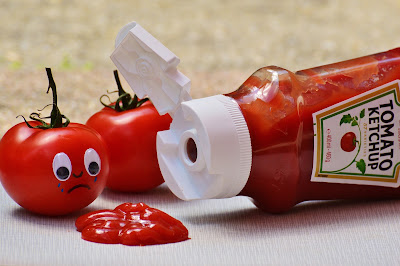*This is a collaborative post*
Chemicals are in everything and they are not something to blindly avoid. But it is a good idea to be mindful of what we use and to cut down on the very nasty stuff.
Here are the 6 steps you can do today to reduce the chemical usage in your home
1. Do Not Let The Dirt Set In.
This is simple, a drop of tomato sauce can be easily whipped up while it is fresh, but if you let it set in and dry out, it will take a lot of elbow grease and cleaning supplies to clean it away.
2. Use Vinegar For Everything.
Literally everything. It is an antiseptic, grease-dissolver and anti-odor solution in one. Here are a few ways you can replace chemicals with vinegar:
Mix one part of white vinegar with one part of water in a spray bottle to create an all-purpose cleaner.
Use it undissolved to get rid of mould in damp places or as a disinfectant.
Add half a cup of vinegar to your laundry to eliminate unpleasant smells. You can even soak your feet in a tub of water-vinegar mixture for the same purpose, as well as nail fungus reduction.
3. Have Your Home Examined
There are all sorts of dangerous materials that can be present in the home. One such nasty is mold, which is caused by excess moisture in the air and can have a really negative effect on your home's health and your own health if left untreated. Fortunately, there are people like this company offering air quality services in Leominster, MA who are able to help when it comes to both testing for mold and removing the problem so that you can breathe easy once again.
It's not just things that can grow within your home either. If your home was built before the 1980’s, there might be a layer or two of lead paint within the walls. Lead is a dangerous chemical and can cause brain damage, so it is a good idea to check your home for it and to remove the paint, if necessary.
Asbestos is another dangerous building material of an old house. It looks a bit like cotton and was used on walls and ceilings as a warming layer. If not touched it is harmless, but a single particle can cause cancer when inhaled. Make sure not to drill the walls if you know they have asbestos and consider removing it during the next renovation.
Contact your local health department to have your house tested for dangerous building materials. If they are present in your house, the health department will be able to put you in contact with professional lead and asbestos removers. Check here for more info.
4. Check Your Plastics And Make The Move To Glass Containers
Plastics contain a series of toxic elements. The most dangerous one - Polyvinyl Chloride (PVC) (recycle grade 3). It used to be put in toys, makeup and toiletries packaging as well as some food containers. If you can - avoid it all together.
Bisphenol A or BPA (recycle grade 7), is an unpleasant chemical found in polycarbonate plastics. Although it is not officially considered unsafe, the American National Toxicology Report found it’s negative effects on the heart, brain, prostate and fetus and child development. BPA was originally developed as a synthetic hormone before its use in the plastics industry was found.
Polystyrene (PS) (recycle grade 6) is used to create most disposable cups and bowls and ‘foamed’ takeaway containers. Styrene, the main chemical of this plastic, can sometimes leak into your food.
The easy steps to limit toxic plastic danger are:
· Do not microwave any plastic containers or cling wraps as heat can break down the fibers
· Consider switching to glass containers all together
· Check your recycling symbols and stick to 2, 4 and 5 while avoiding 1,3, 6 and 7 or PC stamps.
5. Natural Pest Removal
It’s a topic no-one likes to talk about. But, at some point or other you are going to get some unwanted critters move in. Whether it’s a whole tribe of ants, or an army of mice, or worse rats! There are different ways you can approach this situation and it doesn’t have to be about reaching for the poison.
For larger pests, use a pest removal service like this one who use trained animals to help drive away your problem. Nature taking care of nature.
6. Filter Your Drinking Water
Even if you live in an area, where tap water is considered drinkable, traces of chlorine, lead, pesticides and other unpleasant chemicals can be found in it.
Bring a sample of your tap water to the local lab every 6 months to a year to be sure your water is safe to drink or simply use a filter.
Did we miss anything? What other steps can you recommend for reducing chemicals in your home?
*Contributed by a third party for GGD. All photos via Pexels.
FOLLOW GIRLGONEDREAMER:
Twitter | Facebook | Bloglovin' | Instagram
Subscribe to GirlGone Dreamer by Email
Twitter | Facebook | Bloglovin' | Instagram
Subscribe to GirlGone Dreamer by Email









No comments :
Post a Comment
Note: only a member of this blog may post a comment.